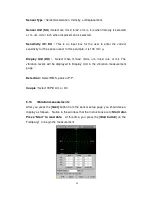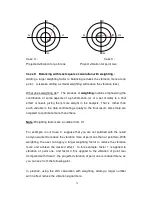
74
Case B Balancing with coefficient from point two :
If we balance the rotor using coefficient from point two (Still using one
coefficient)
,
(using the standard balancing algorithms) we expect to reduce the
vibration of point two from B to B2 which indicates perfectly balanced. But in
this case, the vibration at point one is changes from point A to A2, which is not
satisfactory. The projected vibration for this case is shown in the Case B Plot.
Case B :
Case B :
Projected vibration for point one Project vibration for point two
Case C Balancing with least squares calculation :
The method of
least squares
means that the overall solution minimizes the sum
of the squares of the errors made in the results of every single equation.
Essentially the Least squares calculation is a method in balancing
to reduce the
larger vibration
more quickly than the smaller vibration signals.
By conducting least squares calculations with both the balancing coefficients
from point one and point two, we derive optimum balancing conditions as
illustrated by the following projected vibration plots Case C and Case D. Notice
that both the vibration at point one and point two are reduced significantly at the
same time. In our balancing program (multi-point),
least squares calculation is
always used. The display will show the balancing information from least squares
calculation.
0
90
180
27
0
90
180
27
A
A2
B
B2




































